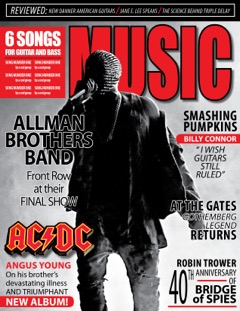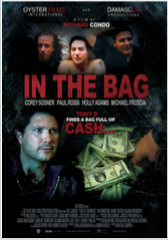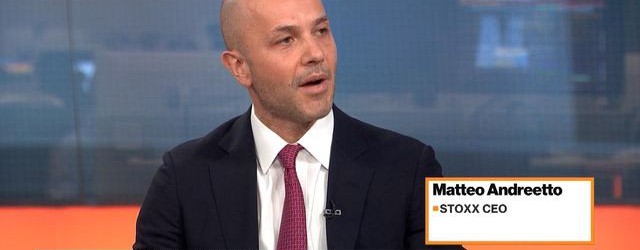Icarus Flies, but FAANGs Fall from the Gaping Maw of US Stock Market – And My Blog is Still Here
Morgan Stanley comes to me
In a statement that agrees with me on the January-February stock market plunge being the first leg of a downward journey that is taking its second leg down now, Morgan Stanley rings the warning bell, saying you need to “prepare for the biggest stock market sell-off in months.”
The U.S. stock market has been partying all throughout July, and a hangover is coming…. Wall Street’s rally is showing signs of “exhaustion,” and … with major positive catalysts for trading now in the rearview mirror, there’s little that could continue to propel equities higher…. The bottom line for us is that we think the selling has just begun and this correction will be biggest since the one we experienced in February,” the investment bank wrote to clients…. A correction is technically defined as a decline of at least 10% from a recent peak. Both the Dow Jones Industrial Average … and the S&P 500 … corrected in early February…. The Dow remains in correction territory…. The firm forecast “a rolling bear market,” during which “every sector in the S&P 500 has gone through a significant derating” with the exception of tech and consumer discretionary…. That these two industry groups haven’t fallen much doesn’t mean they won’t, Morgan Stanley warned. “While it is possible tech and consumer discretionary stocks won’t experience the derating witnessed in other cyclical sectors, we think it is unlikely and are only emboldened by the misses from Facebook and Netflix and the price action last week.” (MarketWatch)
In early July, Morgan Stanley placed a call to sell tech stocks. That proved prescient as those stocks underperformed the rest of the market later in the month while the rest of the market underperformed itself.
Our call … did suggest there was a lot more risk in Tech and growth stocks generally than what was perceived. Therefore, even good earnings could lead to disappointing price action while any miss would be severely punished. From our vantage point, the [subsequent] weaker earnings beat from several Tech leaders and outright misses from Netflix and Facebook were simply additional support for our call. (Zero Hedge)
Our call was that these groups are likely to get hit next and, indeed, we think a meaningful correction in these asset categories began late last month. The bad news is that these sectors make up almost 40% of the S&P 500 and close to half of the Nasdaq Composite Index, so the correction will leave a mark on the broader U.S. indexes if we’re right. (MarketWatch)
Morgan Stanley refers to this year in stocks as a “rolling bear market.” Or, as I put it, stocks would plunge in January and take their next leg down in this extended crash in early summer. I say that has begun … and just in time for my bet; but I won’t do a victory lap yet as the market appears to have passed its tipping point, but Apple is applying full thrusters to hold it from falling … probably for only another day or so. (I always believed and said the second leg down would start in the last part of July.)
Nomura agrees with me and Stanley, too
Nomura’s head of cross-asset strategy Charlie McElligott writes today that he is seeing heightened equity fund manager consternation right now, as there are indications of potential catalysts on the horizon for a reversal of what has been the most important trade of the past 11 years – “growth over value….” Consensual “long growth, short value” positioning has dictated performance over the past few years, and with it, this portfolio construct became “momentum” as well…. These are stocks which throughout the post-GFC recovery period … benefited due to the ability to grow earnings without requiring a “geared” economy…. These same two “growth” sectors then make up 51% of our “1Y Momentum” longs basket…. As we began seeing signs of weakness in some of these “market generals” this earnings season, it comes at a critical juncture in a risk-asset world that is looking to get more optimistic again against the “Trade War” backdrop. (Zero Hedge)
Leading to…
The reversals in questions are many — most obviously a significant “into Value, out of Growth” rebalancing dynamic today…. As such, “1Y Momentum” is seeing its largest drawdown in a month…. We are in-fact dealing with another “factor unwind” again…. It looks to be yet-another “signal” of a regime inflection in the market, alongside “rolling volatility events” YTD and currently spasming central bank policy. I continue to believe in the larger sense, this is due to the Fed’s “QE to QT” impact as we transition from the late-cycle “Cyclical Melt-Up” stage into the “Financial Conditions Tightening Tantrum” phase—and thus my recent “downshift” view. (Zero Hedge)
Morgan Stanley noted,
With Amazon’s strong quarter out of the way, and a very strong 2Q GDP number on the tape, investors were finally faced with the proverbial question of “what do I have to look forward to now?” The selling started slowly, built steadily, and left the biggest winners of the year down the most.
In fact, MarketWatch referred to this as the “most seismic shift” from growth stocks to value stocks “since the aftermath of the bankruptcy of Lehman Brothers back in mid September 2008.” So, maybe these few past days have been just a little bit significant … even more than January’s last few days of downshifting into what became a full market correction. They are more important because they show a market transition from the long “recovery” period into a whole new era where the entire dynamics of the stock market are now rolling over.
The generals are leading us into war
When the stocks that have been leading a bull market (in this case for a VERY LONG TIME) break down, that is a sure sign of a market top. In this case, the market attempted a second peak (with the NASDAQ succeeding briefly and the S&P succeeding ever so slightly before turning coat and running), but the Dow fell, never (so far anyway) to recover to its former (January) summit. Now all indices are sliding quickly back down from that rarified height.
As Zero Hedge pointed out, the leading stocks are often referred to as “the generals,” so ZH asked if the generals are leading us into war. These generals have FAANGs, and here is a picture of how the FAANG stocks have led the uphill charge and are now retreating:
Facebook fell 20% in one day after its terrifying report for the largest single-day loss of any company in the history of the US stock market. Netflix plunged 10% from greater heights in a day. Both stocks continued down from there. The plunge made the world spin.
Amazon’s outstanding report caused its stock to rise half a percent the next day, but it subsequently dropped 2%, so that report had almost no lasting cachet. It ended up that their buyback-generated earnings growth couldn’t accelerate out of the gravity of their missed revenue expectations. (What does “earnings growth” even mean if revenue fails to perform? It is merely an anomaly created by making stock buybacks legal.)
Google destroyed expectations and so rose 5% following its report, though it has subsequently given all of that back up. So, that didn’t hold either.
Apple — the last of the FAANG stocks to report — seems to be the sole general leading the charge upward at this point. Well, sort of … with just one problem: no one is following. That makes the other four FAANG stocks the four horsemen of the apocalypse, since they are all leading the market into defeat.
The Big Apple doesn’t fall
Apple reported robust iPhone sales in spite of Apple’s huge increase in price, which caused Apple to beat every quarter in its history for revenue. Moreover, the past quarter is typically a weak season for Apple’s iPhone sales because customers start holding off for the next model. Apple also beat Wall Street expectations for earnings per share (thanks, in part, to extraordinary stock buybacks on Apple’s part).
The Tech-driven market, at first, rose on Apple’s stellar report; but, by the end the day, both the S&P and the Dow were down. Given that this report was the best report ever by the biggest company in the world — boosting the Apple mothership today to rocket beyond the stratosphere as the first company in the United States valued at a trillion dollars — there was surprisingly little bounce for anyone else. (PetroChina once hit the trillion-dollar mark, too … which happened, incidentally, immediately before the start of the Great Recession in November of 2007.)
The NASDAQ, however, got enough temporary lift to finish the day after Apple’s report positive since the NASDAQ focuses on Tech stocks where Apple has the most impact. (And today’s trillion-dollar announcement as I was writing this gave the NASDAQ another boost to where it will likely end the day positive again. However, Apple is now back down below the trillion-dollar all-time corporate cap summit. Of course, Apple can manipulate it back up there just for fun with another share buyback.)
Stunning to behold, the best report in Apple’s history couldn’t even hold the NASDAQ up one day as of this morning; but passing the trillion-dollar mark created some later enthusiasm. The NASDAQ started the second day after Apple’s report looking pretty low. Barely thirty minutes into the day, it was down almost a full percent.
Thus, this first day of the second half of summer looked like a terror at opening. Just half an hour into the day, the Dow was down more than 160 points from its previous close. The S&P 500 also opened down a half a percent from its prior close. The day is not done, so we’ll see where it lands.
MarketWatch reported at the start of the day,
The day’s decline was broad, with nine of the 11 primary S&P 500 sectors in negative territory…. Thursday’s trading action comes a day after the Federal Reserve left its monetary policy unchanged, as expected, and affirmed its upbeat outlook for the domestic economy…. The 10-year Treasury yield rose back above 3% in Wednesday’s session…. That added to pressure on prices of government bonds, pushing yields higher on anticipation of further tightening by the Fed…. “This market is like living with a volatile family member…. It’s difficult for us to rise when you continually hear how bad things are.”
The past two weeks have, in fact, been brutal for those who base their financial futures on the stalwart FAANG stocks. I actually can hardly keep up with the bad news in stocks right now. I’ve been reading and logging stories in a torrent that is flooding in faster than I can write about it all. Nomura now notes that “the entire equity universe is in turmoil.”
Crowded “long Growth” (and “Momentum”) positioning is “tipping over” with … the current tactical steepening of the UST yield curve … the … tightening of US Financial Conditions and … Chinese outright easing / stimulus pivot…. This overall “knock-on” is a “mean-reversion” across the factors, sectors and themes, driving broad “gross-down” / “net- down” flows throughout the Equities universe. (Zero Hedge)
Nomura’s Charlie McElligott is a bit of an eye-pincher to read, so I’ll leave off on quoting him there, but you get the point.
Apple’s report blew expectations out of the solar system, causing its own stock to rocket skyward (up almost 6% in one day) … taking it to within a feather’s thickness of that trillion-dollar sun in just one day. Yet, even that was not enough to tow US stock market averages upward. For the rest of the market, Icarus’s wings burned off quickly. The S&P and Dow dropped right away, and NASDAQ went down the next. Even the rest of the FAANG stocks couldn’t get any lift after Apple’s stellar report.
Stock buybacks
All of this turnover from “growth” stocks to “value” stocks comes in spite of record buybacks, where were, of course, a big factor in Apple’s stellar report. Apple has not had to do any dividend or buyback action to support its momentum in the past, but this year it joined the buyback parade and even became its queen, while the parade’s king has been Tech overall:
So, in spite of the fact that Tech this year has led the enormous surge in the already huge flow of buybacks that we have seen in every year of the Great Recovery, Tech has tanked. In spite of good-to-outstanding reports by three out of five FAANG Tech stocks, Tech has taken the market down.
That’s outstandingly abysmal performance when you consider this is already the greatest year of announced stock buybacks in market history. (Some announced buybacks still have to play out, of course, as the year is only half over.) Even more so, when you consider that Tech stocks have led the buyback charge. They are suddenly getting almost no bang for the buck. (That old Law of Diminishing Returns again.) It looks to me like the long-term market leaders have exhausted themselves.
According to TrimTabs, Stock Buyback Announcements swelled to a record $436.6 Billion in the second quarter, smashing the previous record of $242.1 billion set just one quarter earlier, in Q1. Combined, this brings the first half total at a ridiculous $680 billion…. “The amount of money committed to buybacks last quarter could fund 6.8 million $1,000 bonus checks to workers every single trading day.” (Zero Hedge)
Hmm. Imagine what an extra thousand dollars every trading day for 6.8 million workers would have done for the US economy. Such heaps of extra personal wealth to spend among so many may have even helped the Buyback Kings. Buys a lot of iWatches and thousand-dollar telephones! (Now, there’s a word you don’t hear much anymore.)
Of course, most of those buybacks using corporate cash were being utilized to help insiders buy themselves out of their own companies:
Looks like a year of peak getting-out action to me! And who led the way, except the FAANG stocks as ZH revealed:
As SEC Commissioner Robert J. Jackson, Jr., recently noted,
Company executives have been grossly abusing the timing of buyback announcements and selling significantly more of their stock immediately after the news than they do beforehand. taking advantage of price bumps that often accompany share-repurchase announcements. (Zero Hedge)
While buybacks have helped insiders (in terms of corporate management positions) become outsiders (in terms of their investment in their own corporations), a lot of selling has been a recent move from these major investors to small retail investors, which is typical of the final weeks of a market cycle. The big traders make their exit through buybacks that stimulate the market, which entices mom and pop in, lest they miss all the momentum, and they’re left holding the empty bag.
21.1 percent of household assets are now in stocks. “Only five times in the past 156 years has the share been this high or higher – this is 42 percent above the norm,” Rosenberg says. (Newsmax)
Ouch! for them.
Jury is still deliberating on my blog
That said, the jury is still out on my betting my blog that the stock market would crash in the early summer. (Actually, I didn’t promise I would end it then, but said that if it didn’t happen by then, I would probably stop writing my blog well before the start of the next year.) On the one hand, that last couple of weeks of the early summer has been a head-wrenching time for the FAANG stocks and a real headbanger for the NASDAQ. (As in it hit its head on the ceiling at a new peak and quickly came tumbling down.) For FAANGS, July was their worst month in almost two years.
On the other, the Dow and the S&P both had their best month since January. (To recall that event, the market pitched an incredibly steep rally in January, but then it began a huge plunge at the end of the month. That could be similar to what is happening now in the Dow and S&P. They started the month strong, but ended it in decline. Because the decline came at the very tail of the month and is only beginning (just like in January), the month overall looks positive. Yet, one could hardly say January was a great month for stocks since that is when the last plunge got started and since the Dow has remained in correction territory ever since (while the S&P and NASDAQ remained in correction territory for almost five months). January terminated one of the greatest rallies in market history.
By the end of July, all the FAANG stocks had retreated, except Apple which hadn’t reported yet. In total, Tech stocks covered themselves in their own blood to a depth of $350 billion. 60% of that occurred in the FAANG stocks. The “FANG Index” lost almost 9% in three days. (Practically entering its own correction period.)
“Sentiment is turning sour in FANG, especially after earnings,” Michael Antonelli, an institutional equity sales trader … said in an email. “They are dragging the Nasdaq 100 down by its feet.” (Newsmax)
The crux of the problem for FAANGs right now is that this sector has been so overbought that crowding is a major issue. Many hedge funds haven’t been able to get out. At the same time, margin debt in the overall market has never been higher. That means, if FAANGs tip any more to where funds and others are forced to get out, the carnage will become severe. And you cannot, as ZH pointed out, have “$100bn loss in a well held name [Facebook] and not have collateral damage.”
No, you can’t; however, it can take a week or two for the collateral damage to start appearing (as companies do their best to hide it as long as they can, as we saw in the last financial crisis):
And that is why I say the jury is still out, and we’re going to have to wait a little bit to see whether the perilous plunge that has begun within the FAANGs carries the newly downtrending market over a cliff. If the market keeps going down, then the crash began in early summer … with the generals. In fact, it began right at the end of July when I surmised it would. And when you consider that all of that turmoil happened at the end of the same month in which the US government positively praised its fabulously fake GDP growth — the greatest in years — and that astronomical news couldn’t even lift the market’s head above the recent horizons of declining FAANG reports … what good news is left to give any lift?
Those boasting about their recent heady NASDAQ gains may not be so proud if the present action continues because you have to pause to realize that all of the grand news for the FAANG stocks is now in the rearview mirror — even the grandest news of all, which came today when Apple crossed out of the trillion-dollar stratosphere intraday before making re-entry to earth. The float from the few FAANGs that did have grand news to share didn’t carry more than about … well, one day! (With the exception of Apple, which is getting a three-day ride.)
From this point forward it becomes all about what is happening in trade wars and with the Fed’s Recovery Rewind, inflation in the face of tariffs, rising bond rates (which compete against stocks) and what is happening in the general economy. Those appear to be major headwinds to the generals who have already largely buckled to their knees.

















